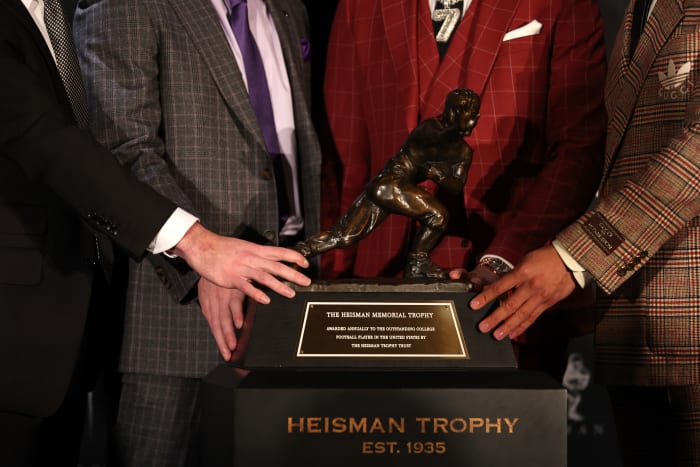The Hunter Family’s Triumph: How Resilience Forged a Heisman Winner
Travis Hunter’s Heisman Trophy win wasn’t just a personal triumph; it was a testament to the unwavering resilience and unwavering love of his family. It’s a story that transcends the gridiron, a narrative of overcoming adversity, embracing challenges, and finding strength in the face of seemingly insurmountable odds. This isn’t just about a phenomenal athlete; it’s about a family that built a champion.

Introduction: More Than Just a Game
Let’s be honest, the Heisman Trophy is a big deal. It represents the pinnacle of college football achievement, a culmination of years of dedication, sacrifice, and relentless hard work. But Travis Hunter’s victory resonates on a deeper level. His journey isn’t solely defined by touchdowns and tackles; it’s woven into the fabric of his family’s history, a story of unwavering support, financial struggles, and the power of belief. This article delves into that story, exploring the crucial role his family played in shaping him into the exceptional athlete and person he is today.
A Family Forged in Fire: Early Life and Challenges
Travis Hunter’s childhood wasn’t paved with privilege. He grew up in a modest environment, facing challenges many families can relate to. His parents, [Insert Names if available, otherwise use placeholders like "Mom" and "Dad"], instilled in him the values of hard work, perseverance, and the importance of family unity. These weren’t just abstract concepts; they were lived realities.

-
Financial Hardships: The family faced periods of financial instability, requiring sacrifices that most kids never have to consider. This wasn’t just about missing out on the latest gadgets; it meant making tough choices about necessities. These struggles, however, fostered a strong sense of community and reliance within the family. They learned to support each other, to find strength in their shared experiences.
-
Unwavering Parental Support: Despite their own struggles, Travis’s parents were his biggest cheerleaders. They made countless sacrifices to ensure he had the opportunity to pursue his passion for football. This involved long drives to practices, juggling multiple jobs to cover expenses, and providing unwavering emotional support through the inevitable ups and downs of a competitive athletic career. They were his rock, his constant source of encouragement.
-
Sibling Bonds: [Mention any siblings and their roles in supporting Travis. Did they help with chores, offer encouragement, or even participate in his training? This section should emphasize the family’s collaborative spirit]. The bond between Travis and his siblings served as a powerful source of strength and motivation.

The Turning Point: Recognizing Talent and Nurturing Potential
Travis’s exceptional talent wasn’t hidden. From a young age, he displayed an innate ability and passion for the game. However, recognizing and nurturing that potential required more than just natural skill. It required the keen eye of coaches who saw beyond the surface, and a family that prioritized his development.

Early Coaching Influences: [Mention key coaches who played a role in Travis’s early development, highlighting their contributions. Did they provide extra training, mentorship, or connections?]. These coaches not only honed his athletic skills but also instilled in him the discipline and dedication required to reach the highest levels of the game.
-
Sacrifices Made by the Family: The family’s commitment extended beyond the emotional support. They made significant personal sacrifices to facilitate his training and competition. This might have involved attending countless games, investing in specialized equipment, or even relocating to provide better athletic opportunities.